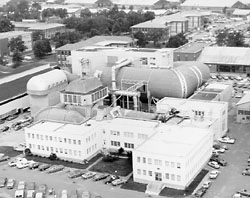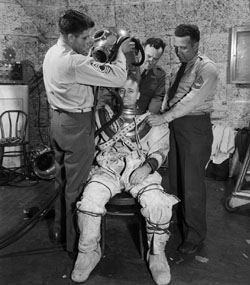
Completed in 1936, the Eight-Foot High Speed Tunnel at the Langley Research Center in Hampton, Virginia, was created by the National Advisory Committee for Aeronautics (NACA), the parent agency of the National Aeronautics and Space Administration (NASA). It was the first continuous-flow high-speed wind tunnel able to test large models and actual working parts of airplanes. It could also operate indefinitely, giving engineers sufficient time to run their tests and check their results. For the first time NACA engineers had a research tool that could supply high-speed test results on a large scale.

Over the years NACA engineers continued to modify the Eight-Foot High Speed Tunnel, specifically attempting to improve performance in the transonic range (Mach 0.7 to Mach 1.4). The "slotted throat" design, a partially open or slotted wind tunnel wall, added in 1950 made it possible to obtain meaningful test results in the transonic range. Renamed the Eight-Foot Transonic Tunnel, this landmark in wind tunnel design allowed NACA engineers to accurately determine the affect of the transonic range on supersonic fighters and bombers. Although phased out of service in 1956 the Eight-Foot High Speed Tunnel provided the technology upon which the United States constructed rockets that eventually flew to the moon and beyond.
Visit the National Park Service Travel American Aviation to learn more about Aviation related Historic Sites.
Last updated: July 17, 2019
